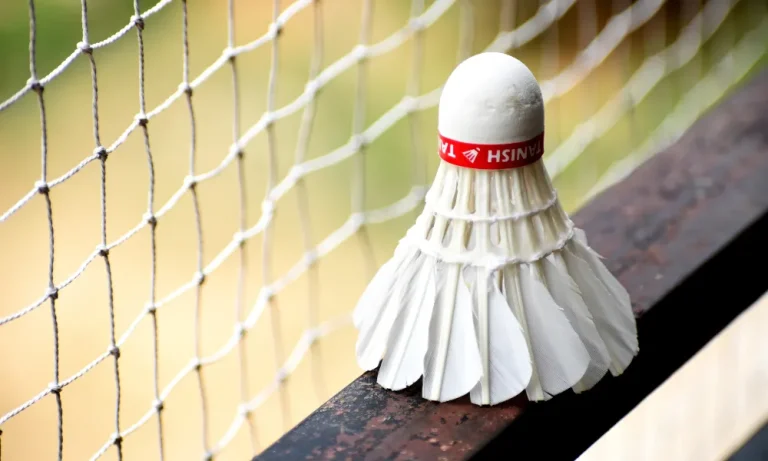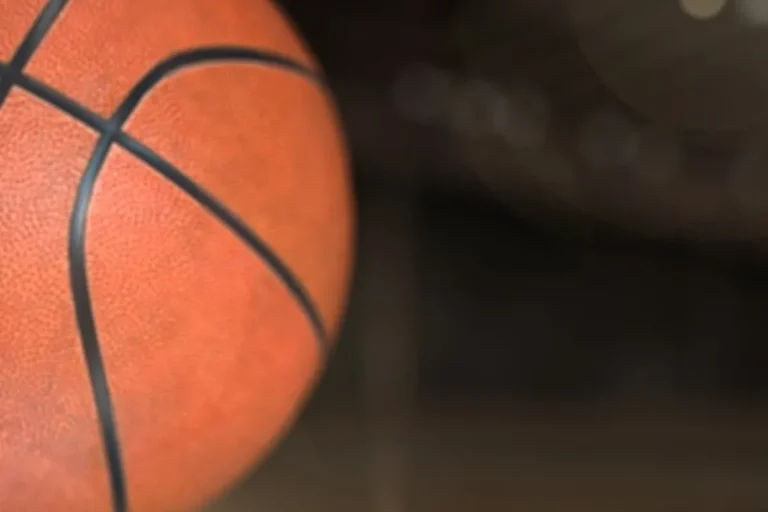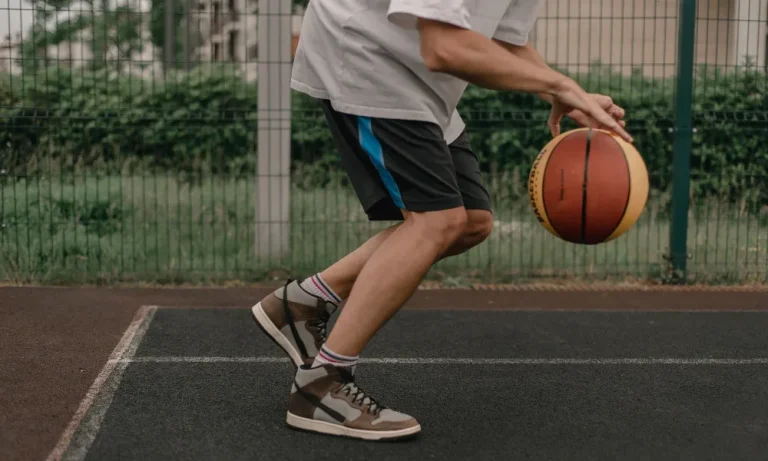The Purpose of a Check in Half-Court Basketball: Rules
Title: “Understanding the Purpose of a Check in Half-Court Basketball: Rules and Guidelines”
Meta Description: “Discover the essential rules and regulations governing the check in half-court basketball games, ensuring fair play and smooth gameplay. Learn more now!”
Have you ever wondered why players in half-court basketball games pause for a moment and perform a check before getting back into action? Well, my friend, that’s what we’re here to unravel. In this article, we’ll delve into the purpose of a check in half-court basketball and explore the essential rules and guidelines that ensure fair play. So, let’s jump right in!
What is a Check in Half-Court Basketball?
In the fast-paced world of half-court basketball, a “check” is a fundamental action that takes place at the beginning or after a score. It involves a player from each team meeting at the centerline to start or restart the game. The purpose of this check is to ensure fair play and maintain the flow of the game.
During a check, the two players face each other and simultaneously tap the basketball above their heads. This action signifies the start or restart of the game, allowing both teams to resume play. The check is performed with the aim of maintaining balance and giving each team an equal opportunity to gain possession of the ball.
The check serves as a way to establish fairness in half-court basketball. By starting or restarting the game with a check, it eliminates any potential advantage one team might have over the other. It provides an equal opportunity for both teams to gain possession and engage in competitive play.
Whether it’s the initial check at the start of the game or a check after a score, this action ensures that the game is played fairly and without any undue advantage. The check acts as a pivotal moment, setting the stage for exciting gameplay and showcasing the skills and strategies of the players.
When is a Check Required in Half-Court Basketball?
As a player, it’s important to understand the situations in which a check is required during a half-court basketball game. A check is necessary in the following scenarios:
- Start of the Game: At the beginning of the game, a check is required. It establishes which team will gain the initial possession and sets the tone for the match.
- After a Score: Whenever a team scores, a check is required to restart the game. This allows the opposing team a fair chance to regain possession and continue the match.
- Out-of-Bounds: If the ball goes out-of-bounds during play, a check is usually required to resume the game. This ensures that both teams have an equal opportunity to regain control of the ball and continue the action.
- Timeouts and Stoppage of Play: In certain situations, such as timeouts or stoppages of play, a check may be required when the game resumes. This maintains fairness and allows both teams an equal chance to regain possession.
It’s important to note that there are instances when a check may be waived or invalidated. For example, if a team commits a foul or violation, the opposing team may be awarded possession without a check. Additionally, in certain informal or recreational games, participants may agree to waive the check altogether to keep the game flowing smoothly.
Rules and Guidelines for a Check in Half-Court Basketball
When it comes to performing a check in half-court basketball, there are specific rules and guidelines that players must adhere to. These rules ensure fair play and maintain consistency throughout the game. Here’s what you need to know:
- Proper Positioning: Players involved in the check must stand facing each other at the centerline. This positioning ensures that both players have an equal opportunity to tap the ball and initiate play.
- Hand Placement: During the check, each player must tap the basketball above their heads simultaneously. This action signifies the start or restart of the game. It’s essential to tap the ball cleanly and avoid any unnecessary contact or interference.
- Ball Possession: After the check, the team that did not have possession of the ball at the time of the check will gain possession. This rule ensures fairness by giving both teams an equal chance to gain control of the ball.
- Additional Rules and Variations: Depending on the specific league or game variation, there may be additional rules or variations that apply to the check. For example, some leagues may use a jump ball instead of a check to determine possession. It’s important to familiarize yourself with the specific rules of the game you’re playing to ensure compliance.
Common Misconceptions about Checks in Half-Court Basketball
There are a few common misconceptions or misunderstandings regarding checks in half-court basketball that I would like to address. It’s important to clarify these misconceptions to ensure a proper understanding of the rules and purpose of the check. Let’s take a look:
- Misconception: Checks determine possession for the entire game. Some players may mistakenly believe that the initial check at the start of the game determines possession for the entire duration. However, checks are only performed at the beginning of the game and after a score or out-of-bounds situation. Possession can change throughout the game based on gameplay and violations.
- Misconception: Checks are only for show. Some players may view the check as a mere formality or a show of sportsmanship. However, checks are an integral part of the game and serve the purpose of establishing fair possession. They ensure that both teams have an equal opportunity to gain control of the ball and continue the game.
- Misconception: Checks are always required after a timeout. While checks are often performed after a timeout or stoppage of play, it’s not always a mandatory requirement. Depending on the specific rules or variations of the game, possession may be awarded to a team without a check. It’s important to understand the specific rules of the game being played to determine if a check is necessary.
Importance of Following Check Rules in Half-Court Basketball
Adhering to the rules of checks in half-court basketball is of utmost importance for fair play and sportsmanship. Let’s delve into why it’s crucial to follow these rules and how disregarding them can lead to disputes and hinder the game’s flow.
- Fair Play: Following check rules ensures fairness for both teams. By performing the check correctly, it allows each team an equal chance to gain possession of the ball. This fairness promotes a level playing field, where the outcome of the game is determined by skill and strategy rather than unfair advantages.
- Sportsmanship: Adhering to check rules shows respect for the game and your opponents. It demonstrates good sportsmanship by playing within the established guidelines and maintaining integrity. Engaging in fair play and following the rules fosters a positive atmosphere, where competition is healthy and enjoyable for everyone involved.
- Disputes and Game Flow: Disregarding check rules can lead to disputes and interruptions in the game’s flow. If the check is not performed correctly or one player tries to gain an unfair advantage, it can result in arguments and disagreements among players. This disrupts the game’s momentum and detracts from the overall experience.
Conclusion
Understanding the purpose and rules of a check in half-court basketball is essential for fair play and a smooth game flow. By clarifying common misconceptions and emphasizing the importance of following check rules, players can engage in sportsmanship and ensure a level playing field.
Technical FAQs: The Purpose of a Check in Half-Court Basketball: Rules
When is the check performed in half-court basketball?
The check is performed at the beginning of the game and after a score or out-of-bounds situation.
Does the check determine possession for the entire game?
No, checks only determine possession at specific moments during the game, not for the entire duration.
Are checks necessary after every timeout?
Checks after a timeout may or may not be required, depending on the specific rules or variations of the game being played.
What is the purpose of a check in half-court basketball?
The purpose of a check is to establish fair possession and provide both teams with an equal opportunity to gain control of the ball.
How does following check rules promote fair play?
Following check rules ensures that both teams have an equal chance to gain possession, creating a level playing field for fair competition.
What can happen if check rules are disregarded?
Disregarding check rules can lead to disputes, interruptions in the game’s flow, and a loss of sportsmanship among players.




